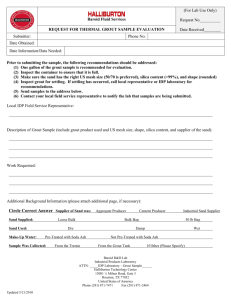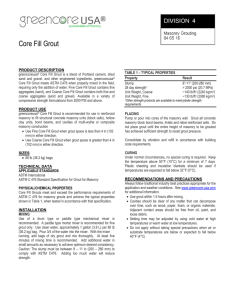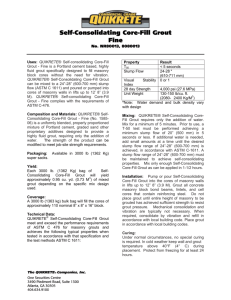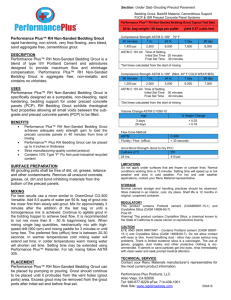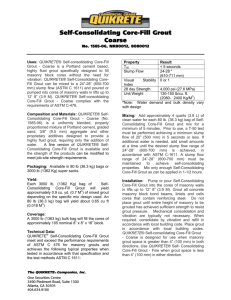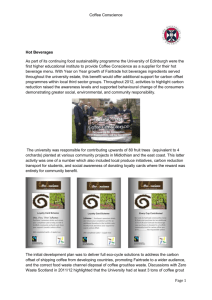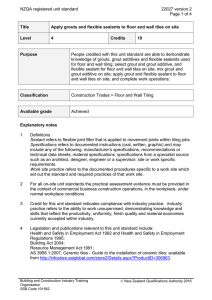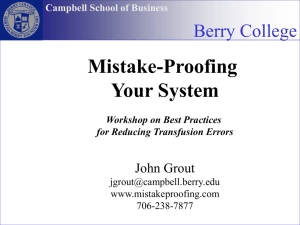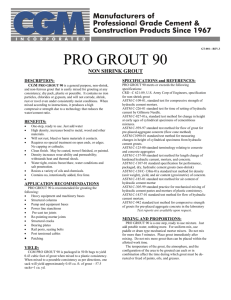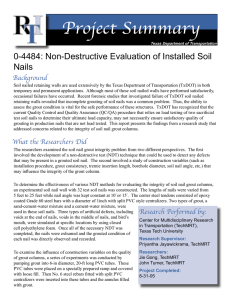TDS 113 - Laticrete
advertisement
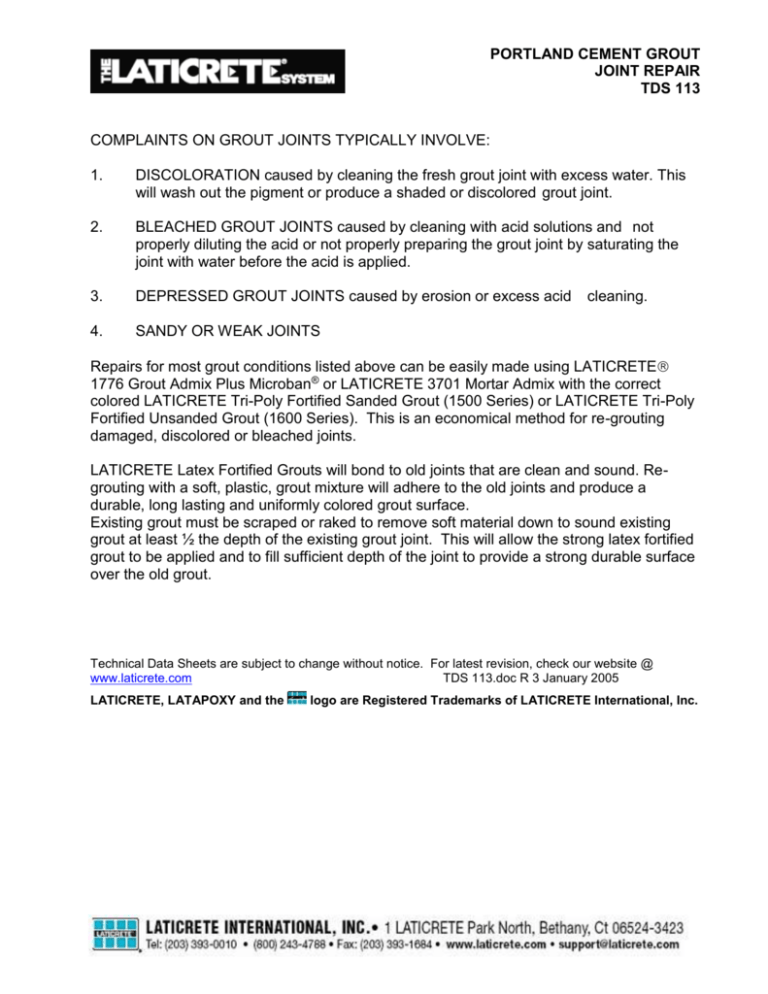
PORTLAND CEMENT GROUT JOINT REPAIR TDS 113 COMPLAINTS ON GROUT JOINTS TYPICALLY INVOLVE: 1. DISCOLORATION caused by cleaning the fresh grout joint with excess water. This will wash out the pigment or produce a shaded or discolored grout joint. 2. BLEACHED GROUT JOINTS caused by cleaning with acid solutions and not properly diluting the acid or not properly preparing the grout joint by saturating the joint with water before the acid is applied. 3. DEPRESSED GROUT JOINTS caused by erosion or excess acid 4. SANDY OR WEAK JOINTS cleaning. Repairs for most grout conditions listed above can be easily made using LATICRETE 1776 Grout Admix Plus Microban® or LATICRETE 3701 Mortar Admix with the correct colored LATICRETE Tri-Poly Fortified Sanded Grout (1500 Series) or LATICRETE Tri-Poly Fortified Unsanded Grout (1600 Series). This is an economical method for re-grouting damaged, discolored or bleached joints. LATICRETE Latex Fortified Grouts will bond to old joints that are clean and sound. Regrouting with a soft, plastic, grout mixture will adhere to the old joints and produce a durable, long lasting and uniformly colored grout surface. Existing grout must be scraped or raked to remove soft material down to sound existing grout at least ½ the depth of the existing grout joint. This will allow the strong latex fortified grout to be applied and to fill sufficient depth of the joint to provide a strong durable surface over the old grout. Technical Data Sheets are subject to change without notice. For latest revision, check our website @ www.laticrete.com TDS 113.doc R 3 January 2005 LATICRETE, LATAPOXY and the logo are Registered Trademarks of LATICRETE International, Inc.
